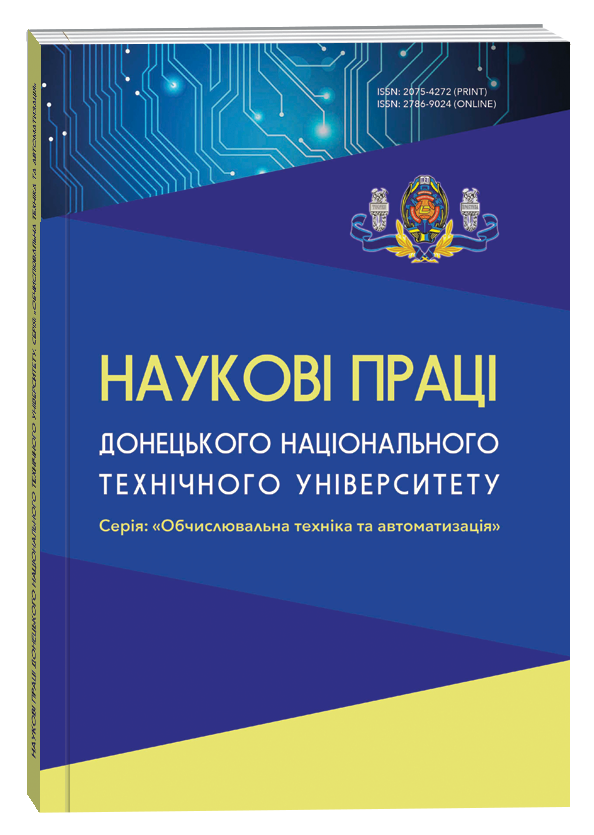INTELLIGENT TECHNOLOGIES FOR ANALYSIS, CLASSIFICATION AND RECOMMENDATIONS IN COLLECTION MANAGEMENT SYSTEMS
DOI:
https://doi.org/10.32782/2786-9024/v3i5(37).344519Keywords:
intelligent systems, collection management, similarity analysis, classification, recommender systems, multimodal data, scalability, IoT.Abstract
The article is devoted to the development and investigation of intelligent technologies for analysis, classification, and recommendation in collection management systems. The study addresses the challenge of organizing and processing collection data, which are characterized by rapid growth in volume and increasing heterogeneity. These factors complicate efficient storage, search, and structuring of collections. It is shown that traditional collection management systems are usually limited to isolated tasks such as basic storage or search and often fail to integrate similarity analysis, classification, and recommendation algorithms into a unified framework. The use of intelligent approaches enables overcoming these limitations and provides opportunities for building universal systems capable of handling large-scale datasets. The purpose of the research is to achieve enhanced efficiency and scalability in collection management by constructing a model of an intelligent system that integrates multimodal object representation, classification methods, duplicate detection, and recommendation mechanisms. To achieve this goal, existing approaches were analyzed, a model for representing collection objects was formalized, similarity computation techniques were developed, and an architecture combining classification and recommendation modules was proposed. Experimental evaluation demonstrated that the integration of these components ensures high classification accuracy, effective duplicate detection, and relevant personalized recommendations. Particular attention was paid to scalability: the system maintained a stable response time even under significant growth in the number of collection objects. The practical significance of the research lies in the universality of the proposed model, which can be applied both in private multimedia and digital collections and in corporate or scientific infrastructures, such as libraries, archives, and databases. The scientific novelty is defined by the creation of a comprehensive architecture that integrates several intelligent methods into a unified system. Future research perspectives include the application of deep learning approaches for multimodal feature processing, the improvement of recommendation algorithms, and the integration with security and access control mechanisms to ensure robustness in large-scale environments.
References
R. Kaur, I. Chana, J. Bhattacharya. Data deduplication techniques for efficient cloud storage management: a systematic review. Journal of Supercomputing, vol. 74, pp. 2035–2085, 2018. DOI: 10.1007/s11227-017-2210-8.
M. Hasan, A. Hussien. Techniques of data deduplication for cloud storage: A review. International Journal of Advanced Computer Science and Applications, vol. 15, no. 3, pp. 45–55, 2024.
L. Ogiela, M.R. Ogiela. Cognitive security paradigm for cloud computing applications. Concurrency and Computation: Practice and Experience, vol. 32, no. 8, e5316, 2020. DOI: 10.1002/cpe.5316.
A. Roy. Recommender systems: Algorithms, challenges, and trends. Journal of Big Data, vol. 9, no. 1, pp. 1–32, 2022. DOI: 10.1186/s40537-022-00592-5.
J. Devlin, M.W. Chang, K. Lee, K. Toutanova. BERT: Pretraining of deep bidirectional transformers for language understanding. In: Proceedings of NAACL-HLT, 2019. DOI: 10.48550/arXiv.1810.04805.
C. Xu, D. Tao, C. Xu. A. Survey on multi-view learning. Neural Computing and Applications, vol. 23, no. 7–8, pp. 2031–2038, 2013. DOI: 10.1007/s00521-013-1362-6.
M.L. Zhang, Z.H. Zhou. A review on multi-label learning algorithms. IEEE Transactions on Knowledge and Data Engineering, vol. 26, no. 8, pp. 1819–1837, 2014. DOI: 10.1109/TKDE.2013.39.
M. Farid, R. Latip, M. Hussin, N.A.W. Abdul Hamid. Scheduling scientific workflow using multi-objective algorithm with fuzzy resource utilization in multi-cloud environment. IEEE Access, vol. 8, pp. 24309–24322, 2020. DOI: 10.1109/ACCESS.2020.2970475.
N. Chhabra, M. Bala. A comparative study of data deduplication strategies. In: Proc. 2018 1st Int. Conf. Secure Cyber Computing and Communication (ICSCCC), pp. 68–72, 2018. DOI: 10.1109/ICSCCC.2018.8703363.
K. Tiwari, Q.M. Rizbi. A study and review of duplicate data in cloud computing. Journal of Advances in Science and Technology, vol. 21, no. 1, pp. 74–80, 2024. DOI: 10.29070/nsek7b45.
A. Anand. Intelligent resource allocation in multi-cloud environments: An AI-driven approach. International Journal of Scientific Research in Computer Science, Engineering and Information Technology, vol. 11, no. 1, pp. 1035–1046, 2025. DOI: 10.32628/CSEIT25112429.
R. Rayaprolu, K. Randhi, S.R. Bandarapu. Intelligent resource management in cloud computing: AI techniques for optimizing DevOps operations. Journal of Artificial Intelligence General Science, vol. 6, no. 1, pp. 397–408, 2024. DOI: 10.60087/jaigs.v6i1.262.
Y. Li, D. Chen, J. Hao. Cloud workflow scheduling optimization research based on ant colony algorithm. Academic Journal of Computing & Information Science, vol. 6, no. 5, pp. 9–13, 2023. DOI: 10.25236/ AJCIS.2023.060502.
M. Reshetniak, S. Popereshnyak. Method for accessing and processing multimedia content in a cloud environment. In: Proc. 2019 IEEE Int. Scientific-Practical Conf. Problems of Infocommunications, Science and Technology (PIC S&T), pp. 71–76, 2019. DOI: 10.1109/ PICST47496.2019.9061463.
Downloads
Published
How to Cite
Issue
Section
License

This work is licensed under a Creative Commons Attribution-NonCommercial-NoDerivatives 4.0 International License.





